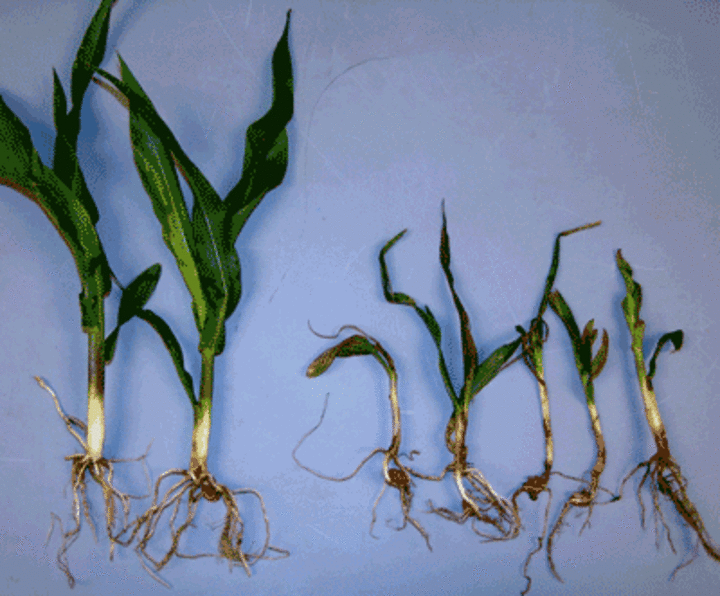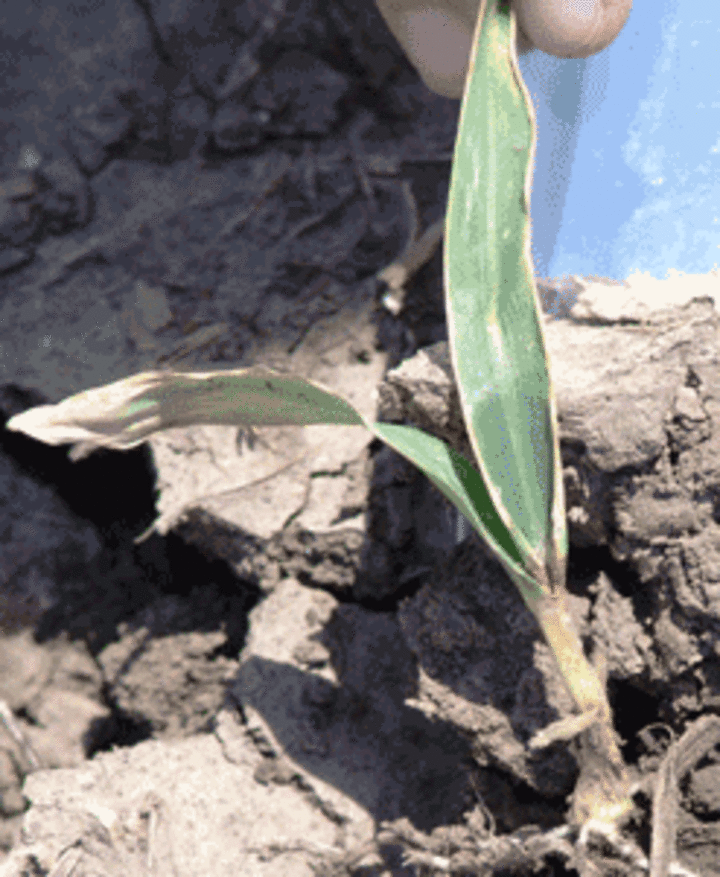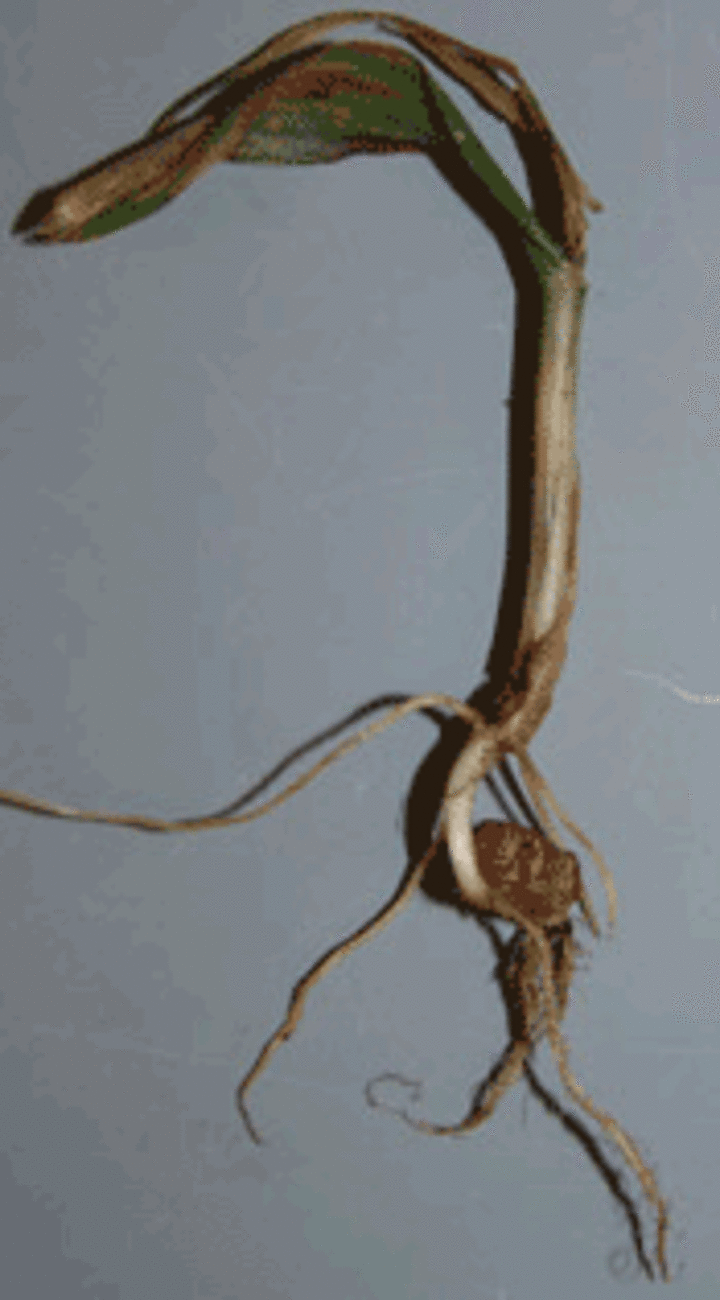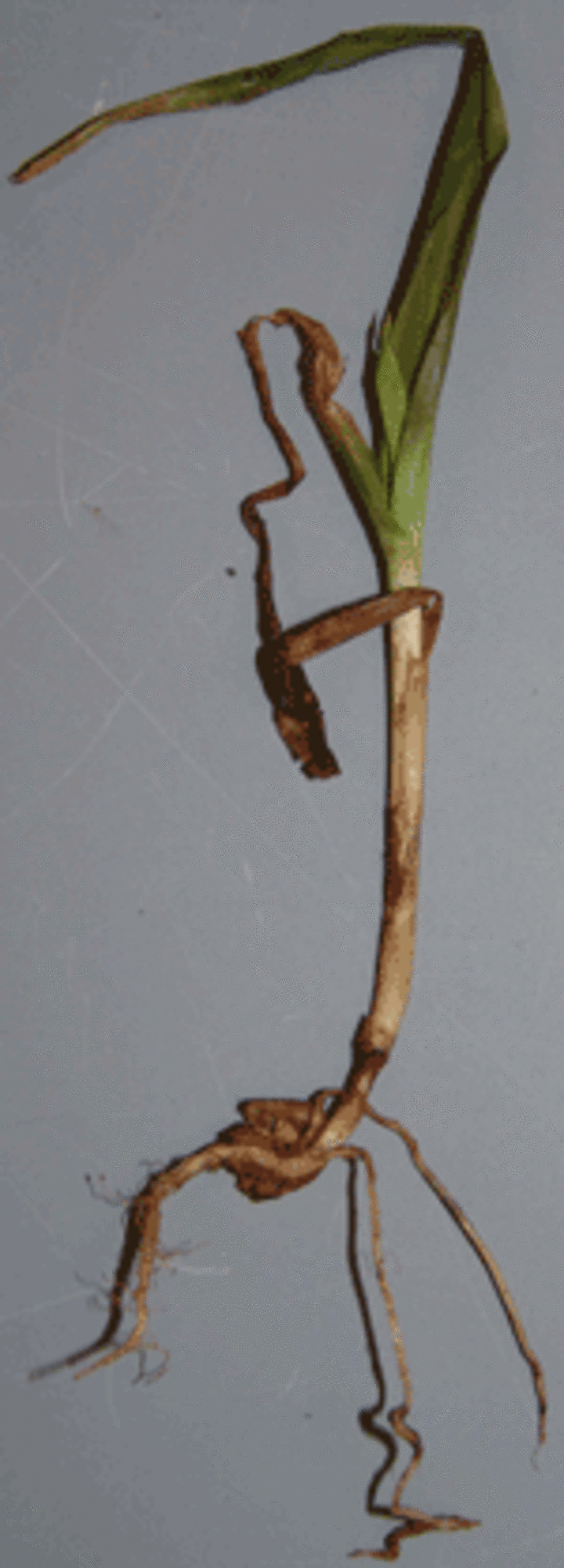
|
| Figure 1. Seedlings collected from healthy (left) and diseased (right) areas of a field demonstrating differences in height, color, and root rot caused by seedling diseases. |
May 2, 2008
Recently planted corn may be at higher risk than normal for damage from seedling disease pathogens. Delayed emergence of as much as two weeks has been reported in some fields and can increase seedling disease risk. Fortunately, most, if not all, corn is treated with one or more seed treatment fungicides that help to reduce disease. Prolonged periods of inclement weather can cause excessive stress on plants predisposing them to seedling disease in spite of seed treatments .
Disease caused by Pythium may be especially favored by the cool weather and wet soil conditions in Nebraska now. Moisture is especially important to Pythium because water is needed for the pathogen to produce motile zoospores, which chemically detect plant roots and swim toward them and infect. As many as 14 species of Pythium infect corn, some of which are also able to infect soybean and sorghum. These organisms also produce specialized survival structures, called oospores, which are thick-walled to protect them from harsh conditions. This also enables them to survive for many years, even in the absence of crop plants.

Figure 2. Seedling disease symptoms in corn. |

|

|
Diagnosis of seedling diseases can be difficult because several of them cause similar symptoms, such as stunting and chlorosis (yellowing) of upper plant parts, pre- or post-emergence seedling death (also called damping off) and discolored or rotted roots (Figures 1 and 2). You can look for an additional symptom often accompanying Pythium infection by pulling gently on a discolored root. If the outer part of the root (cortex) slips off of the root leaving the white stele in the center, Pythium is the likely cause of the disease.
Tamra A. Jackson
Extension Plant Pathologist
